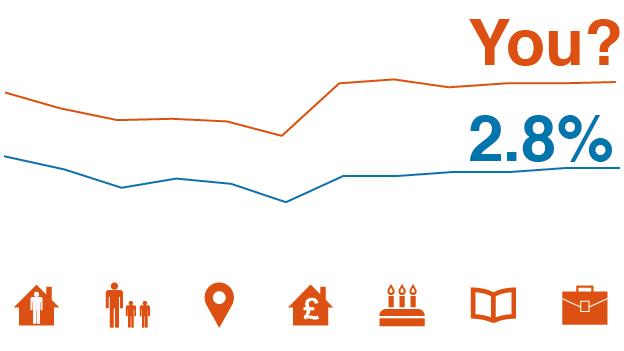Is what you spend on lunch a sign of financial health?
- Published
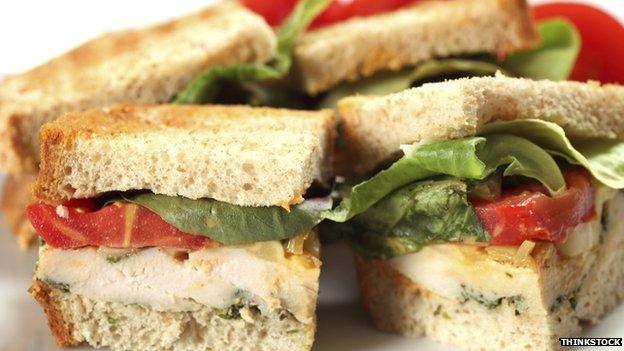
More than 10% of quick lunch purchases in London include a chicken sandwich
The morning's work is done. The stomach rumble cannot be ignored. It is time for lunch.
The opportunity, perhaps, to delve into a work bag to pull out a lovingly crafted risotto or the leftovers of last night's curry.
More likely is the dash to the nearest takeaway to grab something quick - probably a chicken sandwich - to bring back to the desk.
The result, according to research, is an annual lunch bill of £667 a year, or £830 for those working in London.
This simple choice may actually be a fairly decent indicator of how well off people are feeling and of consumers' changing tastes, experts say.
Capital spending
Millions of lunches were served from 260,000 outlets, with the food sector generating £44.9bn of sales in the UK in 2013, according to analysts Horizons.
Emma Read, director of marketing and business development, says that as people feel they have more money in their pockets, they will start to eat out more for lunch - although their spending will be far from extravagant.
"Outlets are riding the wave of coming out of recession, but consumers are also becoming more demanding," she says.

Not many workers have time for a leisurely business lunch these days
If this is a sign of economic recovery, then research by analysts, the NPD Group, highlights that this is not being felt across the country.
In the five years from the end of the recession in 2009, lunch visits to quick-service restaurants in London - including fast food outlets, bakeries and coffee shops - rose 17.1%.
In the rest of Britain, it was up by only 4.4% over the same period.
"Lunch purchased through the fast food channel in London has increased far faster than in the rest of Britain," the research says.
Typically, customers each spend £3.53 on these lunches in London, and £2.84 in the rest of Britain, NPD research suggests.
Making your own
Such spending on pre-prepared lunches is "bonkers", according to Matthew Wood, director of Vouchercloud.com. Home-made packed lunches make far more financial sense, he believes.
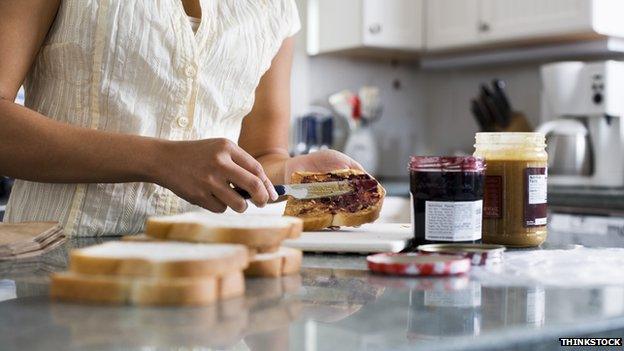
Making our own packed lunches makes more financial sense, says Vouchercloud's Matthew Wood
"With increasingly busy lifestyles, it is understandable to see why people are choosing convenience over economy," he says.
"It is very easy to slip into a routine of popping to the shop to grab a sandwich rather than planning your weekly or monthly shops to incorporate the components of a homemade lunch, then taking the time to prepare it."
In a further indication of how frantic some working lives have become, NPD research suggests that more than half of Londoners (52%) took their takeaway lunch to their desks, compared with just over a third (38%) in the rest of Britain.

Top five London lunch-to-go items:

Chicken sandwich: bought during 10.9% of visits to quick-service restaurants
Bacon or BLT sandwich: 7.7% of visits
Beefburger: 7% of visits
Cheese/Veg sandwich: 6.6%
Chips/French fries: 6.1%
Source: NPD Group, year ending Aug 2014

New trends
The sector seeing the sharpest sign of growth, says Mrs Read, is "fast casual" dining.
This is a lunch typically priced at between £5 and £10 and slightly more "sophisticated" than a limited menu of choices under £5.
Served quickly over the counter, it is often health-focused and includes Mexican or international cuisine.
This was not hit as hard by the recession as the "casual dining" sector of sit-down lunches priced at between £10 and £20, she says.
The adaptable nature of these restaurants also makes them attractive for growth in shopping centres, transport hubs, and even hospitals.
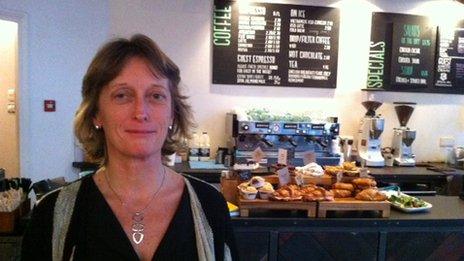
Emma Read says that customers expect a greater level of personal choice
While the simple chicken sandwich may be the most common lunch choice today, tomorrow's diners are more likely to choose from a range of ingredients to create their own personalised lunch.
Technology has made the idea a much simpler proposition, says Mrs Read, with online options allowing people to specify want they want in their salads and sauces.
Diners expect to be able to access wi-fi in the restaurant and they expect to order their lunch on a computer or smartphone while on the way from the office. They may also use discount schemes and online vouchers.
The more demanding customer, she says, will want information about the ethical source of the food, whether it will be suitable for those with allergies, that it will encompass new flavours and that it can even be delivered to their desk at any time of day.
And if they get all of that, they will not bother with a packed lunch when heading out to work or even a bland, takeaway chicken sandwich.
- Published6 June 2014
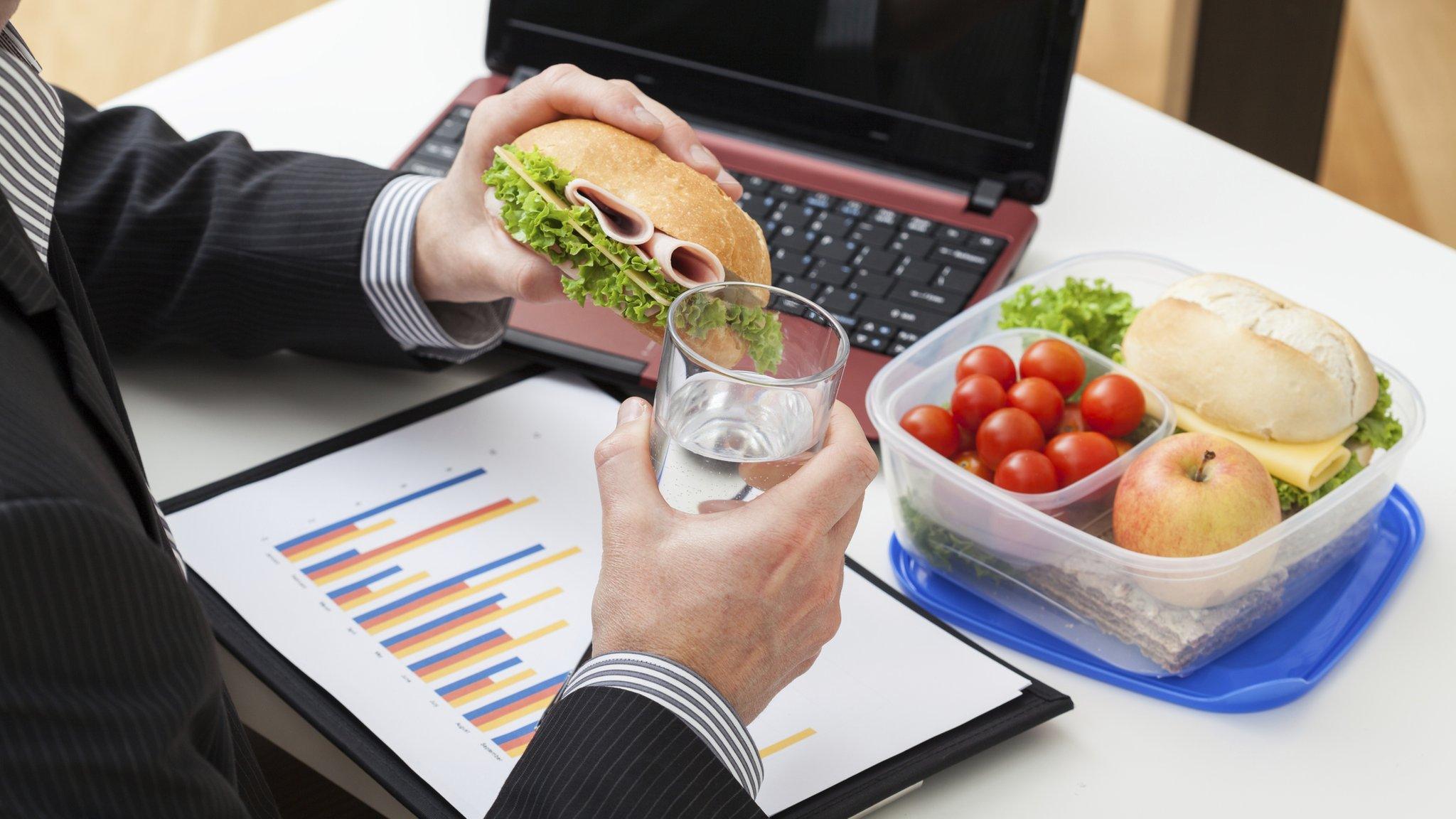
- Published18 December 2014

- Published17 February 2015
